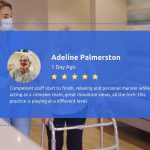Using photography for patient education is another strategy that will help your office thrive in a down economy. We have all heard the saying that a picture is worth 1,000 words and this concept is especially true when helping patients understand the condition of their teeth and why they might want to move forward with treatment. The key to making this work in your practice it to develop a simple system to use digital photos for patient education.
While you may have reasons to take a more extensive series of photos for some more advanced cases, we typically take the following series of 6 photos for patient education:
- Natural smile
- Close up of smile with cheek retractors
- Mandibular occlusal view
- Maxillary occlusal view
- Left buccal corridor
- Right buccal corridor
When we show these photos to patients they often tell us that they have never seen their teeth like this before. This is exactly the point of taking these photos. They allow patients to see their teeth in way they have never seen before.
Dr. Frank Spear is a very accomplished clinical photographer and he has taught us a great deal about how to use clinical photography for patient education. One of the photography techniques we learned from Dr. Spear is the concept of using digital photography to help patients understand the condition of their teeth and also how to use photography to help patients understand what might happen if they don’t accept treatment. This second point has proven especially useful in our practice. After hearing Dr. Spear talk about how to use photography to help patients understand what could happen if they don’t accept treatment, we assembled a file of pre-treatment photos showing common dental issues. We organized these photos in one, easily accessible file for quick reference. These photos have proven to be very useful at motivating patients to accept treatment, especially for asymptomatic conditions. These photos show patients where they might be headed and they provide strong motivation to take corrective action to avoid more complicated problems in the future.
Digital photography for patient education is a powerful tool that will guide your patients to want more ideal care. Consider Dr. Frank Spear as your guide and follow his lead. Keep Smiling!









